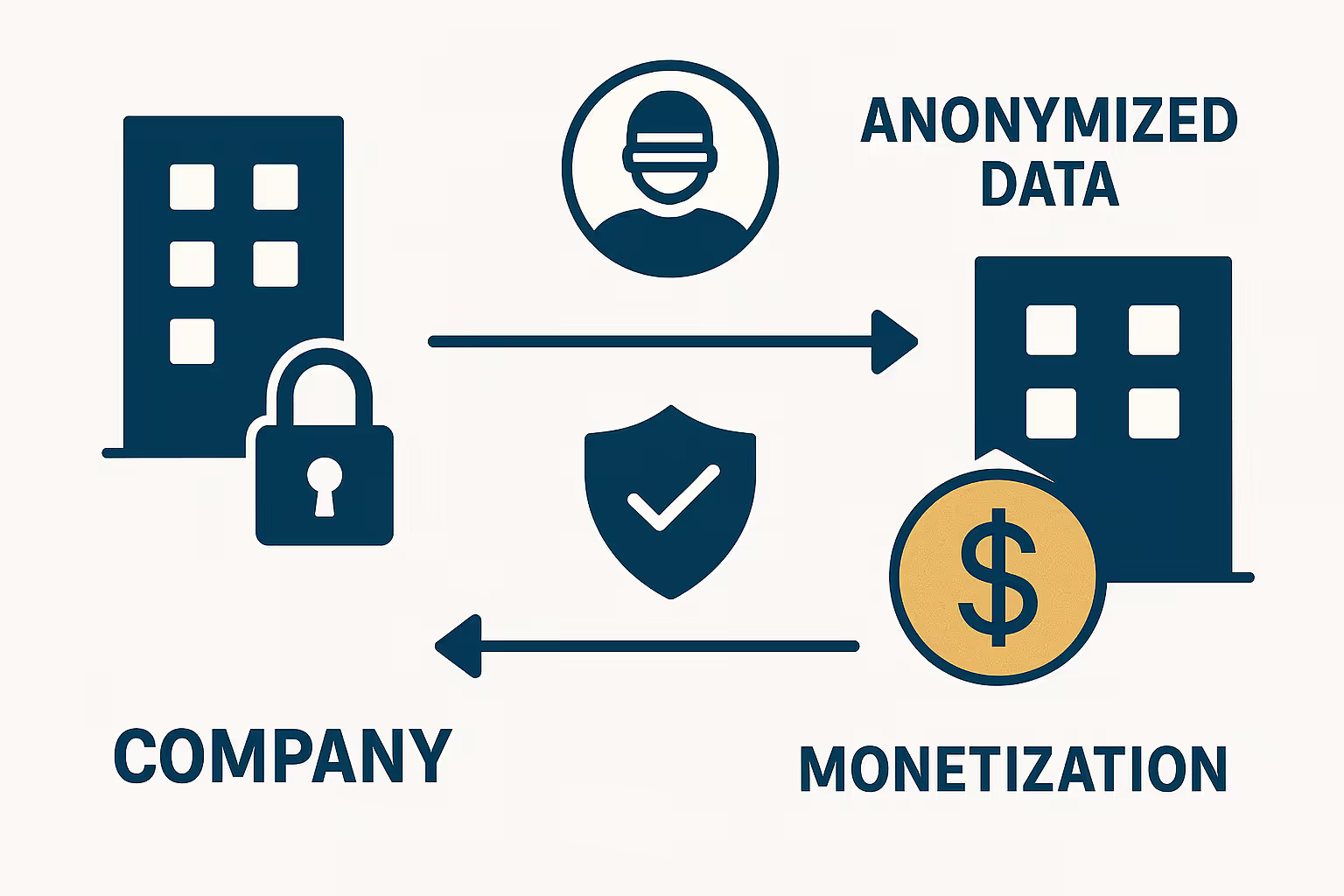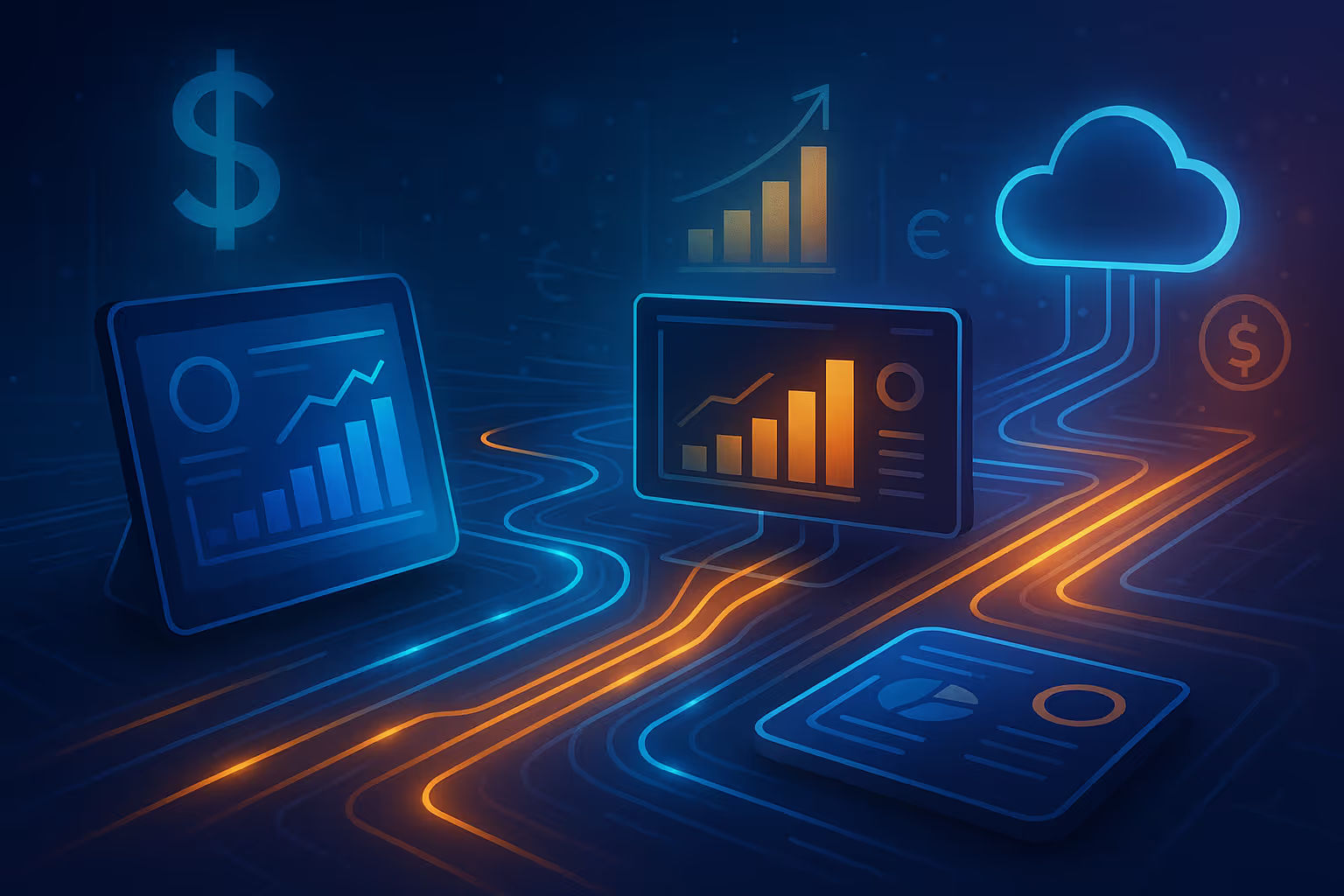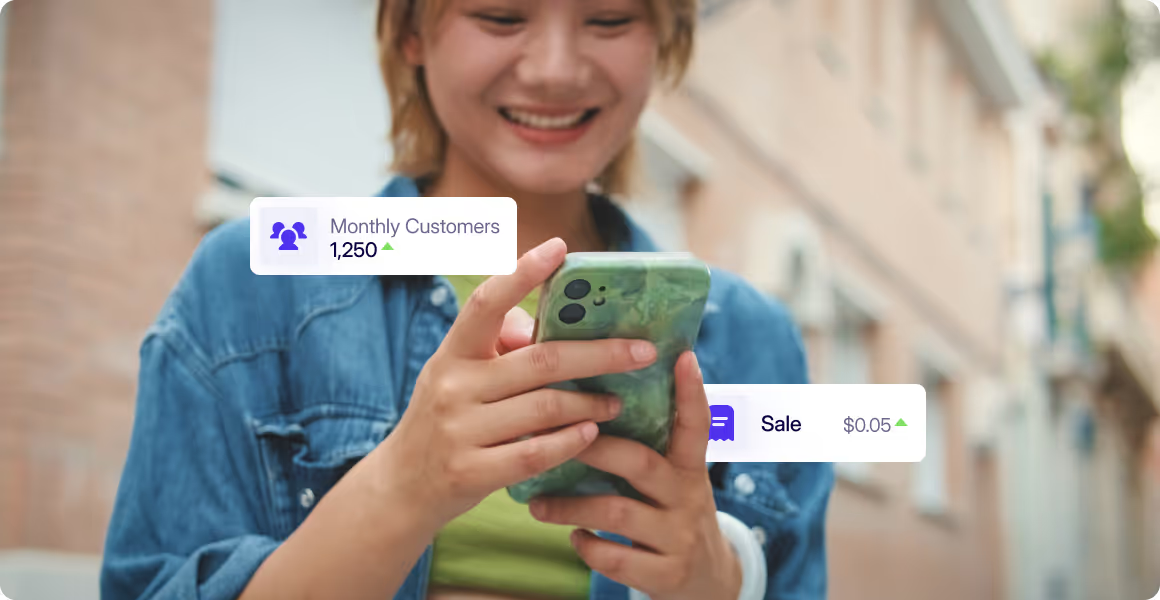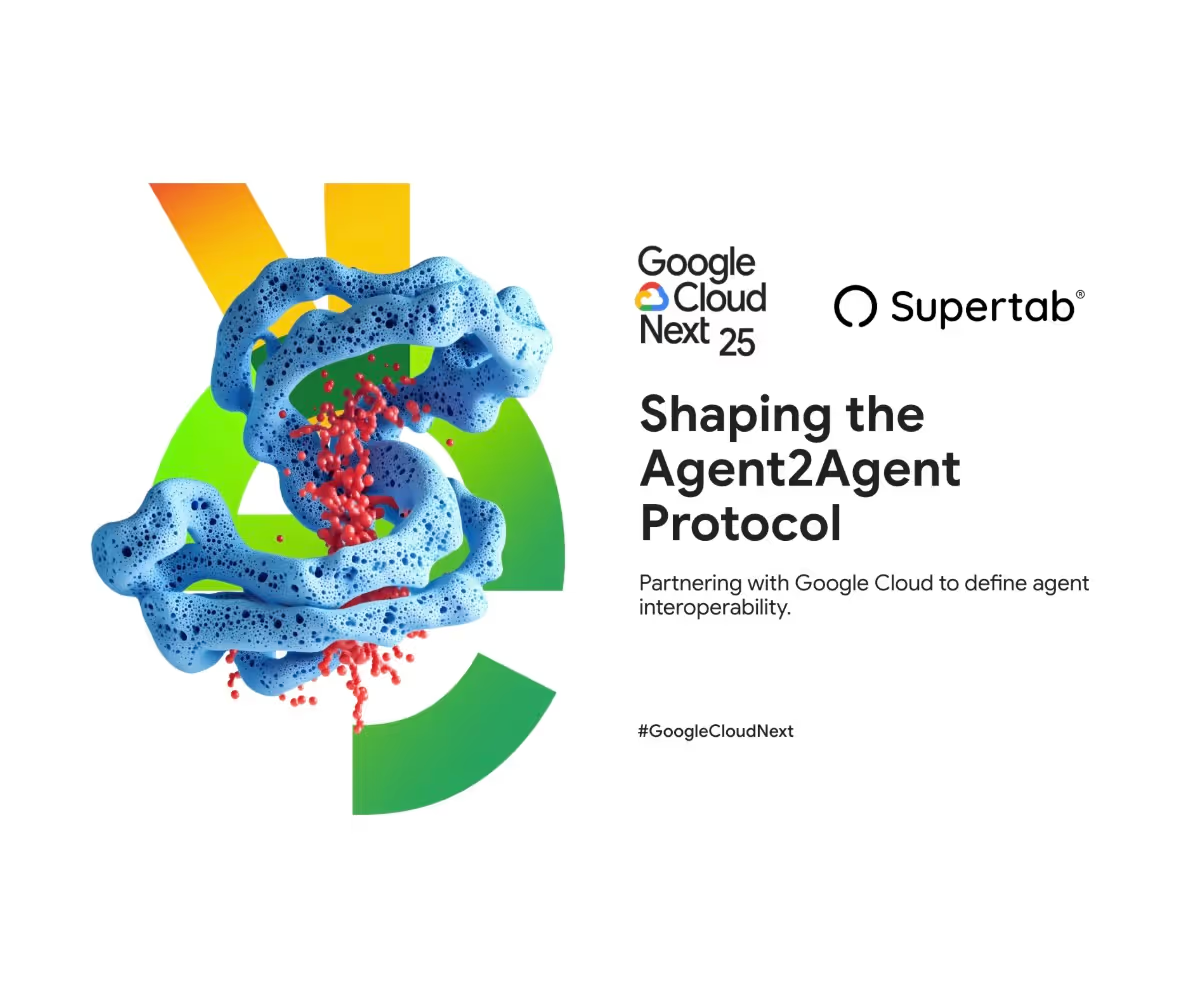Imagine this scenario: over the last two years, your SaaS company has compiled usage data for thousands of customers for your cloud-based video compression software. This data encompasses material that can inform target demographics, pricing structures, and various other practical contexts for both B2B and B2C providers.
But what’s the best way to reduce costs and improve your business with these assets? Whether you’re a business owner, a tech strategist, or a product manager, turning raw data into financial value can be a challenge. In this guide, we’ll advise you on data monetization strategies and essential legal and ethical considerations when you’re exchanging, selling, or leveraging personal data.
What Is Data Monetization?

Data monetization refers to the process of leveraging company- or business-owned data to generate revenue, optimize operational efficiency, and enhance customer experiences. It’s already something that top-performing organizations rely on for revenue.
According to an MIT survey, top-performing organizations credited 11% of their overall revenue to data monetization. Data monetization can be categorized into two approaches: direct and indirect. In the next section, we’ll discuss each of these and how you can use them.
Direct monetization
Direct monetization refers to the sale or licensing of data, data-derived products, or services to external parties. This raw or processed data could include information such as demographic profiles, consumer behavior, market trends, and other insights that can be learned from compiled assets.
Some companies also establish direct monetization subscription models, such as Data as a Service (DaaS), Insight as a Service (IaaS), or Analytics as a Service (AaaS). Here is how they differ:
- Data as a Service: The sale of raw data to a third party. Offers the lowest revenue potential as it still needs to be analyzed before it can be used.
- Insight as a Service: The sale of summarized analytical insights that are generated from numerous sources, including combinations of both internal and external data sources. Higher revenue potential, but could require increased workloads to prepare this data.
- Analytics as a Service: Real-time controlled access to analytics and visualization tools through cloud-based platforms or APIs. Has the most significant growth potential, but requires the most IT management and workforce. Examples include Coresignal and Snowflake.
Indirect monetization
Indirect monetization is when a business or company uses internal data to enhance its business performance and increase operational efficiency. Through indirect monetization, companies can reduce operations costs (and identify performance gaps), optimize processes to analyze customer behavior better, and innovate on offered products and services.
With this method, you may integrate data-driven insights to modify your decision-making or product development processes. For example, if you have a business that focuses on selling personalized shirts, you’ll have a better sense of sizing and fabric preferences. Other general examples could include:
- Optimizing supply chain efficiency through predictive analytics
- Reducing risks and fraud
- Improving customer experience with targeted recommendations
- Supporting strategic decision-making with actionable insights
Direct Data Monetization Strategies

In the next section, we’ll discuss some specific strategies for direct data monetization, including selling anonymized data to third parties, licensing data as a product, and participating in data exchanges.
Selling Anonymized Data to Third Parties
Depending on the nature of the information you have collected and the data privacy laws in your country or state, one effective strategy is to sell anonymized versions of your data to third parties. Before doing this, you should check if the data would be more effective if kept private and leveraged internally. But there are revenue opportunities if you sell in-demand aggregated data.
By anonymizing the information, you’ll be able to comply with legal requirements for selling data and safeguard against exploiting the information. Cybersecurity is always a concern, and if sensitive data falls into the wrong hands, it could result in the release of personal information. In 2025 alone, there have been data breaches by companies including Blue Shield of California, Victoria’s Secret, and Adidas.
For a use case, let’s say you’re a sports jersey company that has collected data from customers over several years. With this data, you could reach out to The Coca-Cola Company and PepsiCo and offer to sell them the demographic information to help inform new marketing decisions for Gatorade and Powerade products.
Licensing Data as a Product
When you license data, you give express permission to external organizations to access and use those assets for specific purposes, periods, or usage rights in exchange for either licensing fees or royalties on products created through that data. These business insights can then be used to inform marketing, research, and analytics approaches for the permitted parties.
With this strategy, you’ll maintain ownership of the data and control how it’s used. The drawbacks of licensing data include increased risks to data privacy and security when sharing or licensing data. Licensing can be a complex and time-consuming process that requires ongoing management. Licensing Contract considerations could include:
- Scope of use
- Data ownership statements
- Data quality and liability of sharing data
Data Exchanges and Marketplaces
Data Exchanges and Marketplaces are two examples of direct monetization platforms where a business or company can trade or distribute data. On a data exchange platform, a group of organizations or businesses has a structured partnership to share data for mutually beneficial reasons.
Data marketplaces, on the other hand, are digital platforms where businesses and organizations can buy and sell data to one another. These can include raw or processed data sets, data-derived products, and data-derived services. Many digital platforms facilitate these transactions. They include platforms like:
- Datarade
- Weld
- Snowflake
- Talend Data Fabric
- Oracle Data Marketplace
Indirect Data Monetization Strategies

In the next section, we’ll discuss some strategies for indirect data monetization, including personalizing customer recommendations, enhancing product design, tailoring pricing, and optimizing content.
Personalizing Offers and Recommendations
When leveraging your own data, one of the most effective implementations is to personalize product offers and tailor recommendations based on your customers’ needs and preferences. You’ll improve your customers’ satisfaction and increase engagement, which can lead to higher conversions and increased customer loyalty.
As you gather more data, you’ll also be able to pinpoint the different kinds of marketing channels and approaches that your customers are more likely to engage with. You’ll also be able to personalize marketing for various segments of your audience based on their browsing behavior and purchase history.
A few examples of this from major companies include Amazon with personalized purchase recommendations and Netflix’s algorithm, which aligns future offerings for a user based on what they’re already watching.
Improving Product Design and UX
This indirect monetization strategy overlaps with personalization, but data can also be used as a tool for identifying and troubleshooting customer pain points. Suppose you’re a small CRM company, and data shows that users are having repeated difficulty with the learning curve of your product. In that case, data can be instrumental in improving your product design and user experience.
With that information, the business can assess the onboarding of your product and create a way to introduce customers to it with less friction. This data could also inform inventory organization based on which products are successfully selling versus those that are not performing up to expectations.
Dynamic Pricing or Usage-Based Billing
Another strategy is to focus less on the specifics of a product or service and adjust pricing based on customer behavior, rather than relying on guesswork. Let’s say you’re a SaaS company and you have data on how often users log in to use your product.
With that information, you can design pricing tiers based on the proportions of single-use, occasional users, and regular users. You could also add additional limitations to a Freemium model or create a tier that offers more incentives for paying for a higher tier.
Alternatively, you could adjust the charged amount based on dynamic pricing instead of modifying your individual offerings. Dynamic pricing refers to pricing a product based on external factors, such as market demand, competitor pricing, supply circumstances, and other relevant considerations.
For a more specific example, look to the travel and hospitality industries, where rates for hotels and flights vary dramatically based on the season, date, and sometimes even the exact time of travel. Other examples include:
- A movie theater offers student discounts
- Lower rates for low-income households
- Uber and Lyft charge more during rush hour
- “Lowest price guarantee” policies
Content Optimization and Engagement
Indirect data monetization can also be leveraged to optimize content and enhance customer engagement with marketing on emails, business websites, and PPC ads on search engines. With customer data, you’ll be able to craft more targeted marketing that takes into account the particular interests of individual customers.
By analyzing how your customers interact with your website, you can plan content strategies that recognize what your customers or users have been looking for but have been unable to find. Whether through SEO practices or other methods, this information can then be integrated in a way that keeps customers on websites and encourages them to view your content for extended periods.
Ethical and Legal Considerations

As direct and indirect data monetization both involve the exchange of sensitive information, a variety of ethical and legal considerations arise from both the collection of data and the selling or trading of data with other entities. To exchange and use data effectively without breaking the law, here are some things to keep in mind:
- Always obtain consent to collect and use all data.
- Be transparent about how you will use that personal data.
- Anonymize and aggregate data. Remove personally identifiable information from datasets.
- Implement Data Privacy and Security Measures.
- Ensure there’s no discrimination or bias in data.
- Establish data policies to outline how your business uses and manages its data.
- Develop data collection methods that maintain trust and ensure the ethical use of data.
- Respect IP rights when using existing data or models.
- Communicate with the public, clients, service providers, and data experts about ethical data monetization.
- Continuously review and adapt to the needs of changing laws and regulations and cybersecurity concerns.
Depending on both your location and the type of business, you will also be subject to different privacy and legal requirements. Some of these global bodies include:
- General Data Protection Regulation (GDPR)
- California Consumer Privacy Act (CCPA)
- Protection of Personal Information Act (POPIA)
- Personal Information Protection Law (PIPL)
Unlock the Hidden Revenue in Your Data with Supertab
Data monetization can be complex due to the numerous legal and ethical concerns. Still, it is a guaranteed way to directly or indirectly generate revenue for your business and enhance your understanding of your target customer.
With shared data from tools like Supertab, you can refine your paywalls and pricing decisions, personalize content or customer offers, and gain a granular understanding of user behavior.
Through seamless, frictionless microtransactions, you can take the next step towards not only smarter data but also content monetization. Explore Supertab Experiences now.



.svg)

.avif)


